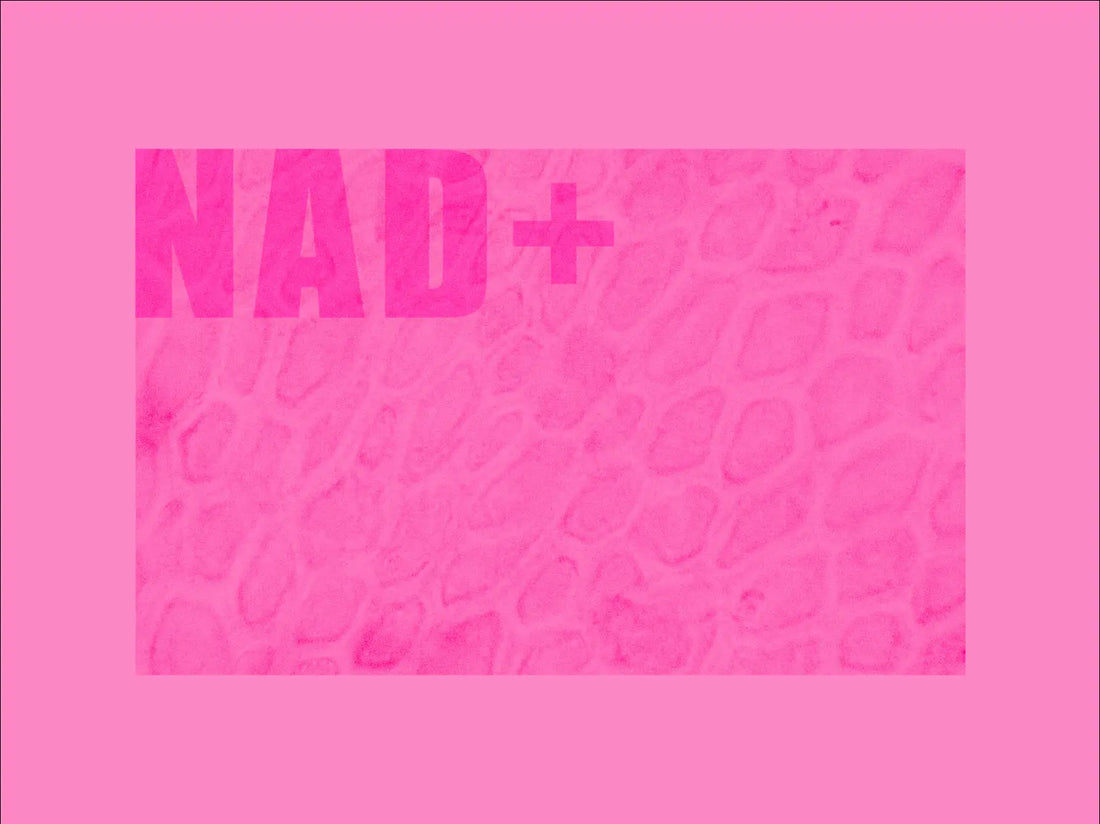NAD which stands for nicotinamide adenine dinucleotide is a molecule naturally found in our cells that helps our cells with producing energy. Recently NAD gained a lot of buzz for being a key player in cellular health, and with cellular health comes a longer health span overall. Being an important longevity player, the attention bestowed on NAD is well deserved. When we age, NAD levels in our cells drop and research has shown that boosting NAD may contribute to a longer and healthier life.
What is NAD and how does it play a role in our cells?
NAD is a coenzyme form of vitamin B3, also known as niacin. It is found in all living cells where it plays a crucial role in the energy production of cells, and is at the crossroad of several signaling pathways in our cells, involved in healthy ageing. NAD exists in many forms in the body and depending on which reaction it contributes to, while be present in the cells as NAD+, NADH, NADP+ or NADPH.
NAD is important for the mitochondria, the powerhouses of the cells, for producing sufficient energy to get our cells and our body going. In addition, also other metabolic processes inside the mitochondria (such as the glycolysis and Krebbs cycle) require NAD for correct functioning. Aside from its important role in mitochondrial functioning, NAD also plays a key role in DNA repair through the sirtuins. During our lifespan, damage to our DNA will occur. Damage to DNA may lead to diseases such as cancer. Our cells contain DNA repair systems in order to minimize and correct damages that occur. These repair systems consume and require NAD+ to be efficient. While levels of NAD decline as we age, the level of DNA damage rises, getting us caught up in a downward spiral of increasing NAD+ consumption from a shrinking pool of available NAD+. Logically, NAD supplementation when getting older is crucial.
How to boost NAD levels: turning to vitamin B3 and its derivatives
As we age, our NAD levels decrease significantly. Considering the important roles NAD plays in maintaining healthy and active cells, supporting NAD levels in our body may be crucial for a long and healthy lifespan.
Although recently in the spotlights due to avid supporters such as supermodels Kendall Jenner and Hailey Bieber, NAD+ as such, usually given intravenously, is not FDA or EFSA approved. NAD taken orally does not penetrate the cell membrane, let alone the mitochondrial membrane and is thus poorly bioavailable. Generally, people are turning to NAD+ precursors as a better way of increasing and levels in the cells.
Research has shown that supplementing with vitamin B3 (niacin) or its derivatives such as nicotinamide riboside (NR) or nicotinamide mononucleotide (NMN) could help support and increase NAD levels in the cell. Each of these molecules is in its own way a precursor of NAD.
When considering a vitamin B3 supplement, there are a few things to take into account. While new kids on the block NR and NMN, touted by longevity researchers such as Charles Brenner (NR) and David Sinclair (NMN), seem to show promising results in studies, not all of these molecules have been approved for use in dietary supplements by the European Union (EFSA, European Food Safety Authority). More research is needed to evaluate the long-term effects.
Regular vitamin B3 or niacin on the other hand, has been around for decades, and its consumption is considered safe. A clinical trial in human patients showed that trial participants who were given a daily dose of niacin or vitamin B3 saw an increase in NAD+ levels in their muscles and blood. In addition, niacin supplementation also appeared to positively affect body composition, with the participants noticing a decrease in fat percentage and an increase in muscle mass. The researchers also observed that hepatic fat was halved and visceral fat was reduced by a quarter. These types of fats are generally considered unhealthy fats surrounding the organs.
Concluding, while newer molecules such as NR and NMN look promising and could in the future offer safe ways to increase NAD, good old niacin or vitamin B3 seems to equally do the trick. Foods that are high in niacin include red meats, poultry, fish (salmon, tuna, anchovies), nuts and legumes.

